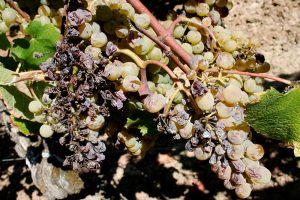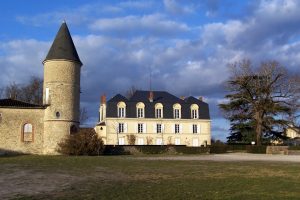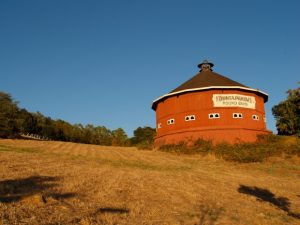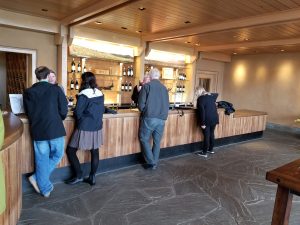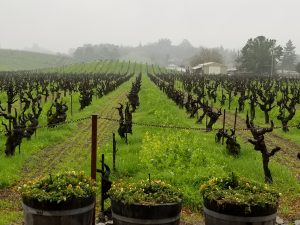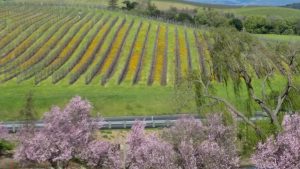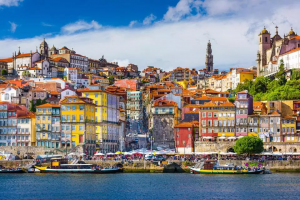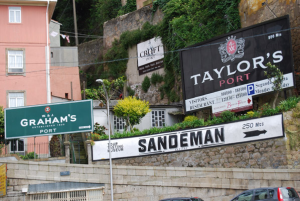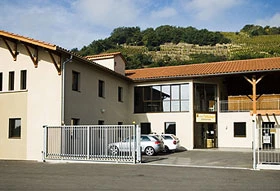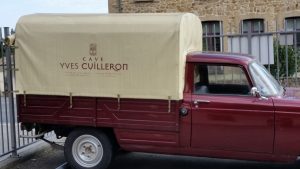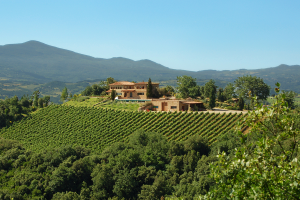Close to 20 years ago, Lucie was on vacation visiting her friends in Provence and what better to do while her friend was going to work than a little wine tasting? Let’s point out here that the Southern Côtes du Rhône is not California with its large wineries and palaces but a lot more modest in style and size.
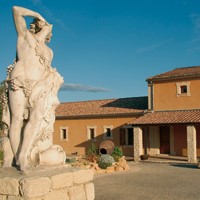 Photo courtesy Domain la Soumade
Photo courtesy Domain la Soumade
On a cold January weekday, she was driving in the small village of Rasteau, looking for the home of one of our favorite wines, Domaine la Soumade. Driving back and forth along a small road, she finally spotted the name on a little signpost, but the only building there was a private house with a little shed in one corner of the garden. As she approached the shed, a big dog barked at her loudly enough to alert the owner of the house. A woman bundling a wool sweater around her shoulders against the chill opened her door to look at the intruder, asking what she wanted. When Lucie told her that she came as far as Québec to taste her wine, the woman said she’d be downstairs in a moment. As it worked out, this was Madame Romero, the wife of the owner and winemaker of Domaine la Soumade . She invited Lucie into the shed which was the tasting room.
While tasting Domaine la Soumade wines, Madame Romero was intrigued why Lucie had come so far to Rasteau and where she was staying. When Lucie explained that she was staying with her friends in Nyons, Madame Romero gave her a bottle of wine with a smile, saying, enjoy it with your friends tonight at dinner.
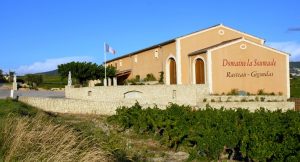
Photo courtesy of Domaine la Soumade
A few years later, Steve and Lucie were wine tasting together in Rasteau, during the harvest. Lucie wanted to take Steve to Domaine la Soumade but could not find the place. The house was still there, but not the shed. And where were all the people who should be wine tasting at that time of year? Driving on the road to Orange we saw a beautiful building with Domaine la Soumade written on it. Since Lucie had been there, they had built a winery and tasting room that could now compete with some of California’s (humbler) tasting rooms. Madame Romero was there, serving behind the bar and when Lucie introduced herself to Madame, she immediately said, “Vous êtes la Québécoise! I remember you, you visited us before we moved here.” The conversation went around that first visit, and then we were introduced to her husband, the winemaker, André Romero. We had the immense pleasure of tasting some of their best wines, some traditional and others reflecting the enterprising spirit of Domaine la Soumade. The highlights included the flagship red wine, Fleur de Confiance and a delicious Rasteau “Vin Doux Naturel“ a sweet wine that is great at aperitif, but can be found only in France.
This experience will forever be one of Lucie’s most cherished wine tasting memories.
